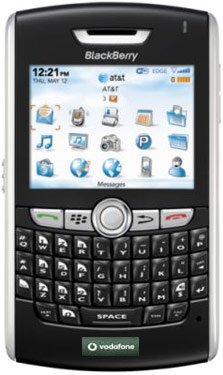Would you pay as much for a megazoom as you would for a dSLR? That's the question you need to answer before plunking down the same amount of cash for the Canon PowerShot SX1 as you would for the EOS Rebel XS or the Nikon D60 with their 18-55mm lenses. Packing some higher-end features over its brother, the SX10 IS, including a CMOS sensor (albeit the same 1/2.3-inch size and 10-megapixel resolution), 30fps 1080p HD movie capture, and support for raw files, the SX1 delivers slightly better performance and image quality as well.
Physically, it's almost identical to the SX10, including the same 20x 28-560mm equivalent lens. It's equally comfortable to hold and shoot, retaining perks like the articulated LCD and four AA-powered operation. It's a little heavier, 1.5 pounds, which makes it feel like a dSLR, but the big grip gives you plenty of holding room. A button to jump into review mode sits near the indented thumb rest on the back, joined by the exposure compensation and focus area selection buttons. Because the SX1's body is matte black plastic, rather than the reflective graphite of the SX10, the light blue labels are easier to see.
On the right side of the back is a dial concentric to a four-way navigation switch with the function button in the middle. Although I generally like the controls, the dial feels too mushy; like the SX10's, it doesn't respond appropriately, as if it needs to spin too far or not as far for any given operation. As a result, for example, I frequently overshot desired shutter speeds. It really feels like it needs better tactile feedback. The zoom switch didn't feel terribly exact, either. This is a typical problem with stepped zooms (these lenses don't really cover a continuous zoom range, instead stopping at a series of preset distances).
Of course, the flip-and-twistable LCD remains a user favorite, and the SX1's is a wide-aspect 2.8-inch model compared with the 4:3 aspect 2.5-incher on the SX10. Keep in mind that when you're shooting photos at full resolution in 4:3 aspect, the effective image size of the LCD is as if it were a 2.5-inch model. Canon does use the extra area on the sides for displaying some information. Unfortunately, the electronic viewfinder isn't particularly great. It updates slowly and looks pretty coarse.
More annoyingly, the camera lacks a dedicated toggle between the LCD and EVF. Instead, you have to cycle through the four display settings: low-info LCD, detailed LCD, low-info EVF, detailed EVF. That makes it nearly impossible to quickly jump back and forth. Similarly, though there's a dedicated movie record button, moving between capturing HD movies and standard 4:3 stills can get confusing. You have to press a button to toggle between the two aspect ratio modes, and the camera captures in whatever your indicated settings are for that aspect ratio: press button for 16:9, start movie record, stop movie record, press aspect button, press shutter for photos. It sounds simple, but I frequently forgot to toggle the aspect ratio back after shooting a movie, and ended up shooting lower-resolution, wide-aspect stills. And raw isn't available in 16:9 mode, which can complicate mistakes like that. You should be able to set a movie size and only have to worry about pressing record. A final annoyance: it remembers all your settings when you power off except the current metering mode. None of these seriously detract from the overall usability of the camera, but forgetful shooters (like me) or infrequent ones might find themselves having a few more settings accidents than they'd like.
Though a movie mode remains on the dial, it's become rather superfluous; in addition to the dedicated button, Canon integrated the movie resolution settings into the function menu along with the standard white balance, color adjustment, exposure bracketing, flash compensation, metering, and still size and quality controls.
Some of the more novel features include a Face Self-timer, which shoots a specified number of seconds after a face is detected, and a custom timer, which lets you also specify the number of shots to take (sort of a limited intervalometer, since you can only take up to 10 shots). As with the SX10, this camera introduces Canon's Servo AF, the company's AF tracking mode. With this camera, since the continuous shooting is so slow, I find the Servo AF has too much time to get confused, and since EVFs black out when a shot's taken, you can't verify that it's focusing on the right thing; I have lots of in-focus fences and out of focus people in my test shots. (And lest you suggest I should have used the Face Detect AF, that doesn't work unless you're shooting faces looking at you, not moving crowd shots.) I find the Servo AF less than useful since EVFs black out when a shot's taken so you can't verify that it's focusing on the right thing. The rest of the capabilities, for the most part, are the same as the competition. These include PASM, full auto, and a handful of scene modes; my favorites are a custom setting slot on the mode dial and 3.9-inch macro and zero(!)-inch Super Macro modes.







0 komentar:
Posting Komentar